
OwnerÕs Manual
SINCE 1 8 8 6
®
44150

Other Quality Products from Hunter
Fans
HumidifiersAir Purifiers

We are pleased you have selected one of our broad line of home comfort products. Our
products are manufactured to high quality standards and are designed for years of service.
We hope you will be satisfied and thank you for buying a Hunter product.
Table Of Contents
Installation
Operation
Features 6
Remove Old Thermostat 8
Labeling Wires 10
System Selector Switches 14
Connecting Wires and Mounting Thermostat 14
Programming/Setting Clock 16
Personal Program Schedule 20
Reviewing Program Settings 24
Manual Overide 25
Filter Monitor 28
Temperature Span 29
Backlighting 29
Trouble Shooting Guide 30
Typical Wiring Diagrams 32

Read This Before Installing Thermostat
IMPORTANT
1
Read the entire installation section of this
Owner’s Manual thoroughly before you begin
to install or operate your Hunter Thermostat.
• Remove the mylar label from the display
window.
INSTALLATION
2
All installation is normally performed at your
thermostat.
PROGRAMMING
3
You can practice programming before
installing your thermostat by inserting and
connecting the batteries and following the
instructions on page 14. This can be done while
you relax in your favorite chair and is a very
good way to familiarize yourself with all the
functions of your Hunter Thermostat.
OPERATION
4
Your Hunter Thermostat is designed to
operate with most gas, oil, electric or 2-wire
hot water heating, and air conditioning systems
that have 24-volt or millivolt control.
This Hunter Thermostat will not control multi-
stage heating or cooling systems, 110/220 V
systems, or 3 wire zone systems.
COMPRESSOR PROTECTION
5
The thermostat provides a 4-minute delay
after shutting off the compressor before it
can be restarted. This feature will prevent
damage to your air conditioner compressor
caused by rapid cycling. It does not provide a
delay when there are power outages.
TEMPERATURE RANGE
6
Your thermostat can be programmed between
40°F and 95°F (5°C and 35°C). However, it will
display room temperatures from 32°F to 99°F (0°C
to 37°C).
POWER FAILURE
7
Whenever the main power is interrupted or
fails, the battery power retains the programs
and current time.

This thermostat is designed to optimize the use of your heating and cooling equipment. It
does this by matching your comfort (the temperatures in your home) to your schedule.
An example:
6 a.m. – You wake up. Program 1 has the heat set to 70° (21°C).
7:30 a.m. – You leave for work. The second program turns the heat back to 62°
(17°C) while you are away.
5 p.m. – You come home. The third program has already warmed your house
back to 70° (21°C).
10 p.m. – You go to bed. A half hour later, program 4 turns the heat back to 64°
(18°C) to save energy while you are under the blankets.
How This Thermostat Works…And Saves You Money
BATTERY WARNING
8
When the batteries are low, “LOW BATT”
indicator on the display will flash. When this
happens, install new batteries immediately.
Once the “LOW BATT” indicator appears, the
thermostat will continue to operate for
approximately 30 days. (Only alkaline batteries
should be used in your thermostat. Rechargeable
batteries have different properties which may
cause the thermostat to not operate properly.
Do not use old batteries.) The batteries should
last one year.
CAUTION: The batteries are the only source
of power used to operate your system. If you
do not replace the batteries, the display will
dim and your heating and cooling system will
stop operation.
NOTE: If you plan to be away from the
premises over 30 days, we recommend that
you replace the old batteries with new
alkaline batteries prior to leaving.

LIGHT
6-7
Features
Manual switch for
turning on heating and
cooling system.
Display backlight for viewing in the dark.
Manual switch for
automatic or continuous
fan operation.
Battery door for easy access
Soft touch programming
buttons (see below)
Display shows time, day, temperature, program number,
hold, usage and low battery indicator.
Reset button for
resetting computer back
to 12:00 A.M. and
clearing all programs.
Individual
pushbuttons for
raising or lowering
temperature settings.
M T W TH F SA SU
SET TEMP HOLD TEMP
88
:
88 88
c
AM
PM
HEAT COOL
1234
FILTER
LO BAT

Changes the clock
into 12 or 24 hour
(military) mode.
For entering minute of day.
For revising
and changing
weekday or
weekend
programs
To reset filter
counter back
to zero.
Returns
display to
current
time and
temperature.
Automatically
programs the
thermostat for
weekday and
weekend
program
settings.
For entering day of week.
Provides
permanent
temperature
setting by
overriding
stored
programs.
Also, clears
manual
override and
returns to
current
program
settings.
For entering hour
of day.
MIN
AUTO
PROGRAM
HOUR
PROG
DAY
HOLD
CLEAR
12/24 HRS RETURN
FILTER
RESET

This thermostat comes with two #8 slotted screws and two wall anchors for mounting. To
install your unit, you should have the following tools and materials.
■ Slotted screwdriver ■ Electric drill and 3/16" bit
■ Hammer ■ Two 1.5 V (AA) Size Alkaline batteries
CAUTION: Do not remove any wiring from existing thermostat before reading the
instructions carefully. Wires must be labeled prior to removal.
■ IMPORTANT! Turn off the power to the furnace at the main power panel or at the furnace.
■ Remove existing thermostat cover and thermostat. See Figure 1. Some thermostats will have
screws or other locking devices that must first be removed. Once wall mounting plate is
exposed, look for wires.
■ If wires are not visible, they may be connected to the back of the wallplate. Again, look for
screws, tabs, etc. Some models have doors that open to expose wires and mounting screws.
(See Figure 1).
8-9
Installation
What You Need
Remove Old Thermostat

TYPICAL HOME THERMOSTATS
FIGURE 1
Wall Mounting Plate Thermostat Cover
Wall Mounting Plate Thermostat Cover

■ Each wire coming from the wall to the existing thermostat is connected to a terminal point on
that thermostat. Each of these terminal points is usually marked with a code letter as shown in
Table A on page 11.
■ The number of wires in your system can be as few as two (for heat only systems), as many as
eight, or any number in between. If you follow the labeling procedures correctly, you do not
have to be concerned about how many wires there are.
■ There is often no terminal marking on the existing thermostat of two wire, heat only systems.
Do not worry, just connect either of the wires to the RH terminal, then connect the other wire
to the W terminal to complete the circuit.
■ IMPORTANT! BEFORE DISCONNECTING ANY WIRES, APPL
Y THE SELF-ADHESIVE
LABELS PROVIDED TO THE WIRE AS SHOWN IN TABLE A ON PAGE 11. (For example,
attach the label marked W to the wire which goes to the W or H terminal on your existing
thermostat.) IGNORE THE COLOR OF THE WIRES
since
these do not always comply with the standard.
■ After labeling wires, disconnect them from the existing
thermostat terminals.
■ Remove existing wallplate. To make sure wires do not fall back
into wall opening, you may want to tape them to the wall.
■ If hole in wall is larger than necessary for wires, seal this hole
so that no hot or cold air can enter the back of the
thermostat from the wall. This air could cause a false
thermostat reading.
10-11
Installation
Label Wires
W
G
Y
RH
RC

Wire Labeling
RH
G
Y
W
RC
RH
RH
RC
RC
G
G
Y
Y
W
W
and connect to thermostat
Terminal shown
then mark wire
with label shown
If the code letter on your
existing thermostat is
RH, R,
VR or 4
24 Volt
G or F
Fan
RC, VC
24 Volt Cool
Y, C or M
(See Note)
Air Conditioning
W or H
Heating
RED
BLUE
GREEN
YELLOW
WHITE
This table will help you
match the labels to the
wires so you can attach
them to your Hunter
Thermostat.
NOTE: Follow the labels
when connecting wires
since many installations
do not follow color
coding of wires.
TABLE A

12-13
Installation
NOTE: If your thermostat has one wire marked R or RH (4-wire system), then leave
the jumper wire between the RH and RC terminals. Otherwise, if you have separate
RH and RC wires (5-wire system), then remove the jumper wire between the RH and
RC terminals.
NOTE: Do not connect a “Common” wire (sometimes labelled “C”) to any terminal on
this thermostat. Tape up the wire and do not use. This wire provides electricity to non-
battery powered thermostats.
Wire Labeling

Snap open the wallplate from your thermostat by pressing the release tab on the bottom of
the thermostat.
Position wallplate on wall and pull existing wires through large opening. Then level for
appearance. Mark holes for plastic anchors provided if existing holes do not line up with
Hunter Thermostat holes.
Drill holes with 3/16" bit and gently tap anchors into the holes until flush with wall.
Reposition wallplate to wall, pulling wires through large opening. Insert mounting screws
provided into wall anchor and tighten. (See Figure 2.)
Mount Wallplate and Thermostat
Figure 2

The heating system selector and the F°/C° selector switches are located on the Printed
Circuit Board.
■ Heating system selector
The heating system selector is a switch on the Printed Circuit Board on the inside of the
thermostat. The switch is at “HG” position. Leave it in this position if you have a gas
furnace or an oil burner.
If you have an electric furnace, test to see whether the heat and fan come on as
expected. Leave the switch in the “HG” position. If the fan does not come on when the
thermostat calls for heat, change the switch position to “HE.”
The system selector has no effect in the cooling mode.
NOTE: “HG” position is for gas and most other systems. “HE” position is for certain
electric systems having a fan relay.
■ F°/C° selector (Fahrenheit/Centigrade)
Your thermostat is set for F° mode from the factory. In order to
change to C° mode, slide the switch to C° and press reset
button on the front of the thermostat with a paper clip. The reset
button is located near the display.
NOTE: Unless reset button is pressed, the thermostat will
not change the mode.
14-15
Installation
Selector Switches
Connect Wires and Mount Thermostat Cover to Wall Plate
■ Match and connect the labeled wires to the appropriate coded terminal screws on the
mounting plate. (See Figure 3, 4.) Ignore any wires which may be present, but which were
not connected to the old thermostat.
HE
HG
C F

■ Be sure to tighten the terminal screws securely, otherwise a loose wire could cause operational
problems with your system or thermostat.
■ Push excess wire back into hole to prevent interference with mounting of the thermostat cover.
■ Make sure the Function Switch is set at OFF, and the FAN-AUTO Switch is in AUTO.
■ Insert the bottom tab on the thermostat body into the slot at the bottom of the wallplate.
Press top of the thermostat body to snap it into the wallplate. (NOTE: Do not force the
thermostat onto the wallplate, as the terminal pins may be damaged. If it does not
snap properly, the thermostat may not work.)
■ Insert the two AA size batteries, observing the
polarity marked on the unit.
■ Switch on the main power. Press the reset button.
(See Figure 5.)
■ The LCD display indicates the current room
temperature of your house. If it shows random
numbers or partial digits, press the reset button
once again.
■ The installation is now complete. Continue reading
Owner’s Manual for complete operating instructions.
FIGURE 3
FIGURE 4
W
RC RH
YG
RH
RH
FIGURE 5

Programming
1
Remove mylar label covering display
window.
2
When the heating or cooling system is
actually operating, “HEAT” or “COOL”
will appear on the display.
3
If power is interrupted the batteries will
keep all programs.
4
If “LOW BATT” indicator appears on the
display replace the batteries.
Setting the Time and Day of Week
When you first install the two AA batteries, the thermostat automatically sets the day and time
to Monday, 12:00 a.m., shows the current room temperature and is programmed for 68° (20°C)
in heat mode and 78° (25°C) in cool mode. Press the reset button after installing new batteries.
The first data you should enter is the current time and day of week. As the keys are pressed,
the display will show the data being entered.
■ Initial read-out after pressing
reset button.
■ Current room temperature is 72°.
■ No indication of program number.
M T W TH F SA SU
SET TEMP HOLD TEMP
I2
:
00 72
c
AM
PM
HEAT COOL
1234
FILTER
LO BAT
■ Press once. Temperature digits
disappear, show time set mode.
HOUR
M T W TH F SA SU
SET TEMP HOLD TEMP
I2
:
00 72
c
AM
PM
HEAT COOL
1234
FILTER
LO BAT
EXAMPLE:
If the unit is
being
installed at
9:15 p.m.,
Saturday, to
set the
thermostat,
you would
press the
keys in the
shown
sequence.
16-17

■ Press and hold until current hour
appears on display.
■ Note the AM/PM indicator.
■ Press and hold until current
minutes appear on display.
■ Press until current day appears
on display.
■ Returns to normal time and
temperature.
■ If return is not pressed it will return
automatically in 10 seconds.
HOUR
MIN
DAY
RETURN
M T W TH F SA SU
SET TEMP HOLD TEMP
I9
:
00 72
c
AM
PM
HEAT COOL
1234
FILTER
LO BAT
M T W TH F SA SU
SET TEMP HOLD TEMP
I9
:
I5 72
c
AM
PM
HEAT COOL
1234
FILTER
LO BAT
M T W TH F SA SU
SET TEMP HOLD TEMP
I9
:
I5 72
c
AM
PM
HEAT COOL
1234
FILTER
LO BAT
M T W TH F SA SU
SET TEMP HOLD TEMP
I9
:
I5 72
c
AM
PM
HEAT COOL
1234
FILTER
LO BAT

Programming
Studies conducted by the Department of
Energy estimate that setting your thermostat
back 10°F for two 8-hour periods during
winter can reduce your fuel bill by as much
as 30%. By setting your thermostat up 5° for
two 8-hour periods during summer you can
reduce your fuel bill up to 25%.
Your thermostat is capable of holding up to
4 separate programs for heat or cool for
weekdays and 4 seperate programs for each
weekend day.
A typical set of programs is shown in Table 1.
Weekday Program (Mon. – Fri.)
Weekday
Winter
Program 1 6:00AM 69°F (21°C)
Weekday
Winter
Program 2 8:30AM 60°F (16°C)
Weekday
Winter
Program 3 3:00PM 68°F (20°C)
Weekday
Winter
Program 4 11:00PM 58°F (14°C)
TABLE 1
Typical Suggested Summer
and Winter Programs for Maximum Savings
18-19

NOTE: The thermostat program will NOT
take effect immediately after
programming of your thermostat but at
the next programmed time/temperature
change. The thermostat is pre-set to 68°F
(20°C) for heat and 78°F (25°C) for air
conditioning. So if you want a
temperature other than 68°F or 78°F (20°C
or 25°C) right away, use the temporary
manual override feature (described on
page 26) to enter your desired
temperature setting.
When your program becomes effective at
the next time/temperature setting, the
appropriate corresponding program number
will appear on the display.
Weekend Program (Sat. – Sun.)
Weekday
Winter
Program 1 7:00AM 69°F (21°C)
Weekend
Winter
Program 2 6:00PM 65°F (18°C)
Weekend
Winter
Program 3 8:00PM 68°F (20°C)
Weekend
Winter
Program 4 11:00PM 58°F (14°C)

Programming
Before programming or changing the
program, use this Personal Program Schedule
to determine which times and temperature
settings will best satisfy both your comfort
and energy saving requirements.
Use a pencil so you can revise your records
each time you change your temperature
settings.
Personal Program Schedule
FOR WINTER FOR SUMMER
PROGRAM WAKE LEAVE RETURN SLEEP
NUMBER 1 2 3 4
MON. TIME TIME TIME TIME
thru
FRI. TEMP TEMP TEMP TEMP
SAT. TIME TIME TIME TIME
and
SUN. TEMP TEMP TEMP TEMP
PROGRAM WAKE LEAVE RETURN SLEEP
NUMBER 1 2 3 4
MON. TIME TIME TIME TIME
thru
FRI. TEMP TEMP TEMP TEMP
SAT. TIME TIME TIME TIME
and
SUN. TEMP TEMP TEMP TEMP
20-21
Page is loading ...
Page is loading ...
Page is loading ...
Page is loading ...
Page is loading ...
Page is loading ...
Page is loading ...
Page is loading ...
Page is loading ...
Page is loading ...
Page is loading ...
Page is loading ...
Page is loading ...
-
 1
1
-
 2
2
-
 3
3
-
 4
4
-
 5
5
-
 6
6
-
 7
7
-
 8
8
-
 9
9
-
 10
10
-
 11
11
-
 12
12
-
 13
13
-
 14
14
-
 15
15
-
 16
16
-
 17
17
-
 18
18
-
 19
19
-
 20
20
-
 21
21
-
 22
22
-
 23
23
-
 24
24
-
 25
25
-
 26
26
-
 27
27
-
 28
28
-
 29
29
-
 30
30
-
 31
31
-
 32
32
-
 33
33
Ask a question and I''ll find the answer in the document
Finding information in a document is now easier with AI
Related papers
-
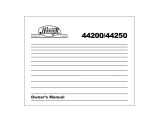 Hunter Fan 44200 User manual
Hunter Fan 44200 User manual
-
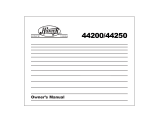 Hunter Fan 44200 User manual
Hunter Fan 44200 User manual
-
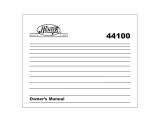 Hunter Fan 47100 Owner's manual
Hunter Fan 47100 Owner's manual
-
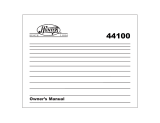 Hunter Fan 44100 User manual
Hunter Fan 44100 User manual
-
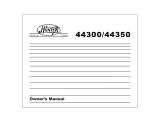 Hunter Fan 44350 User manual
Hunter Fan 44350 User manual
-
Hunter Fan AUTO SAVER 550 User manual
-
Hunter Fan AUTO SAVER 550 User manual
-
Hunter Fan AUTO SAVER 550 User manual
-
Hunter Set 'n Save I 42204 Owner's manual
-
Hunter Set & Save 47110A Owner's manual
Other documents
-
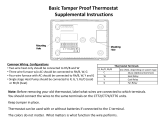 ControlTemp Basic Tamper Proof Thermostat Operating instructions
ControlTemp Basic Tamper Proof Thermostat Operating instructions
-
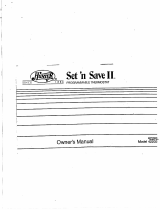 Hunter Fan 42202 User manual
Hunter Fan 42202 User manual
-
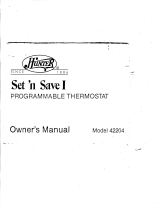 Hunter Fan 42204 Owner's manual
Hunter Fan 42204 Owner's manual
-
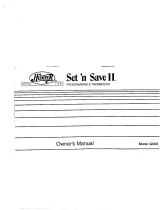 Hunter,R.F 42203 User manual
Hunter,R.F 42203 User manual
-
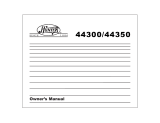 Hunter Fan 44350 Owner's manual
Hunter Fan 44350 Owner's manual
-
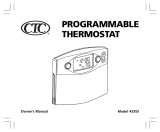 Hunter Fan 43355 User manual
Hunter Fan 43355 User manual
-
Climate Technology 43355 Owner's manual
-
UPM THM301A Owner's manual
-
 Hunter Fan 47110A User manual
Hunter Fan 47110A User manual
-
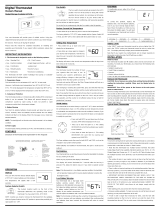 Chicago Controls HC7176 Owner's manual
Chicago Controls HC7176 Owner's manual













































